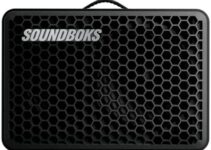Sicona Battery Technologies, an Australian battery materials startup, has secured financial backing from international investors to enhance its silicon-composite anode technology for lithium-ion batteries, allowing it to expedite its commercial development plans in the US market.
![]()
Image: Sicona Battery Technologies
Investors led by Indian chemical conglomerate Himadri Speciality Chemical and Australian venture capital firm Artesian have invested AUD 22 million ($14.9 million) in Sicona Battery Technologies to support the company’s work with battery density-boosting technology.
The Series A funding round was led by Kolkata-based Himadri, Artesian, and Electrification & Decarbonization AIE LP, a fund managed by Canada-based Waratah Capital Advisers. New York-headquartered Riverstone Ventures, Chaos Ventures, Investible Climate Tech Fund LP and Club Investible also participated in the funding round.
Sicona is working to commercialize its high-capacity silicon anode technology, which has been flagged as a possible game-changer for the lithium-ion (Li-ion) batteries that dominate the electric vehicle and renewable energy storage market.
Sicona Chief Executive Officer Christiaan Jordaan said the company’s silicon-composite anode technology delivers 50% to 100% more capacity than conventional graphite anodes and its anode materials can deliver significantly higher cell energy density than current Li-ion batteries.
“Sicona’s core product is an innovative silicon metal-based silicon-composite battery anode technology enabling more than 50% increase in energy density of existing Li-ion batteries,” he said. “By using silicon metal, and not expensive, supply chain constrained and dangerous silane gas like our competitors, Sicona can offer low-cost silicon anode materials at large automotive scale locally in major markets.”
Jordaan said that the recent funding round will enable Sicona, based in Wollongong near Sydney, to advance its goal of establishing a battery component manufacturing facility in the United States. The demand for anode materials in the country is projected to surpass 1,200 GWh by 2030.
“Due to significant interest in our materials from North American automotive companies, we are focusing our efforts on building Sicona’s first commercial-scale manufacturing plant in the US,” Jordann said, noting that the support of Himadri “allows us to accelerate our mission of becoming a major producer of cost-effective silicon composite anode materials.”
To continue reading, please visit our pv magazine Australia website.
This content is protected by copyright and may not be reused. If you want to cooperate with us and would like to reuse some of our content, please contact: [email protected].


